Epilobium canum, Hummingbird Trumpet
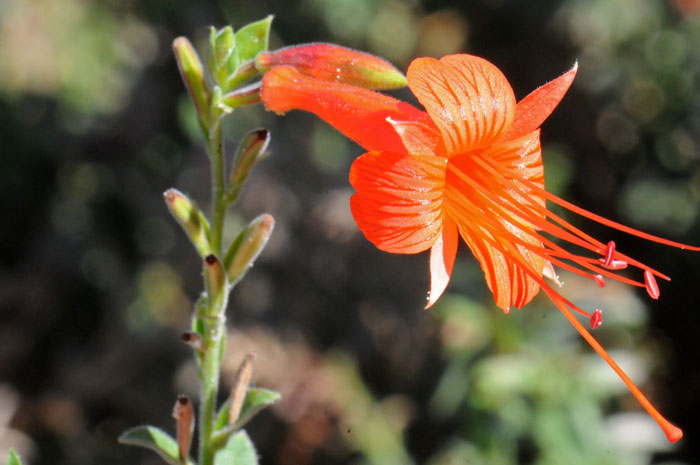
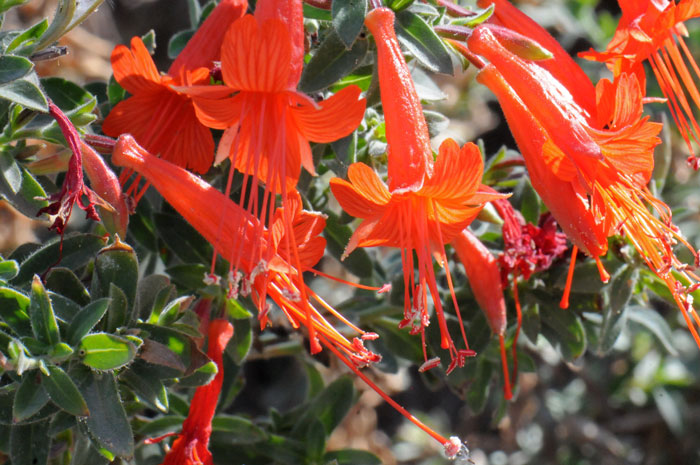
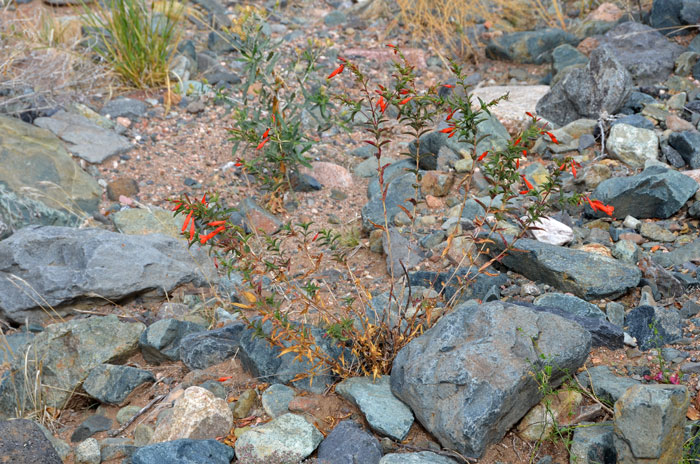
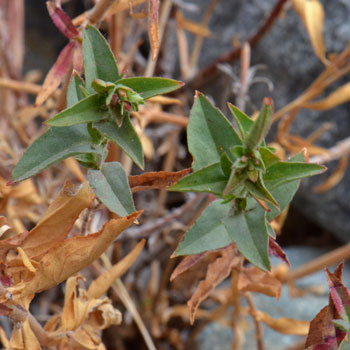
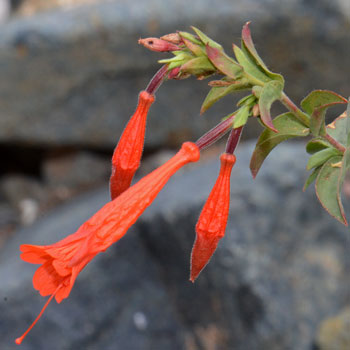
Scientific Name: Epilobium canum
Common Name: Hummingbird Trumpet
Also Called: California Fuchsia, Hummingbird-trumpet, Zauschneria
Family: Onagraceae, Evening Primrose Family
Synonyms: (Epilobium canum subsp. mexicanum, Zauschneria californica subsp. latifolia, Zauschneria californica var. mexicana, Zauschneria latifolia var. garrettii, Zauschneria latifolia, Zauschneria mexicana)
Status: Native
Duration: Perennial
Size: Up to 3 feet.
Growth Form: Forb/herb, subshrub; shrubby looking, somewhat woody at the base, bark shedding.
Leaves: Green, grayish; leaves almost sessile (sub-sessile), some fascicled, leaf shape elliptic or elliptic-lanceolate, sometimes dentate
Flower Color: Red (brilliant red), red-orange, scarlet; flowers showy, large 1 inch corollas, stigma with 4 lobes, beaked fruit.
Flowering Season: June to December.
Elevation: 2,500 to 7,000 feet.
Habitat Preferences: Damp places on rocky slopes and in canyons.
Recorded Range: Hummingbird Trumpet is found in the southwest and western United States in AZ, CA, ID, NM, NV, OR, UT and WY. It is also native to Baja California and northern Mexico.
North America & US County Distribution Map for Epilobium canum.
U.S. Weed Information: No information available.
Invasive/Noxious Weed Information: No information available.
Wetland Indicator: No information available.
Threatened/Endangered Information: No information available.
Genus Information: Over 40 species throughout all of North America. 12 species in Arizona, 28 species in California, 11 species in New Mexico and 2 species in Texas.
There are 4 sub-species in Epilobium canum:
Epilobium canum subsp. angustifolium, Hummingbird Trumpet, (CA);
Epilobium canum subsp. canum, Hummingbird Trumpet, (CA);
Epilobium canum subsp. garrettii, Garrett's Firechalice, (AZ, ID, UT, WY);
Epilobium canum subsp. latifolium, Hummingbird Trumpet, (AZ, CA, NE, NM, OR).
The Plant List includes 939 scientific plant names of species rank for the genus Epilobium. Of these 222 are accepted species names.
Comments: Hummingbird Trumpet, as the name would suggest is pollinated by hummingbirds and this species provides an excellent late source of nectar for their southern migration.
Hummingbird Trumpet plants are related to the ornamental Fuchsias of the tropics.
The type species of Epilobium canum subsp. latifolium, (=Zauschneria arizonica) is from Metcalf, Greenlee County, Arizona.

